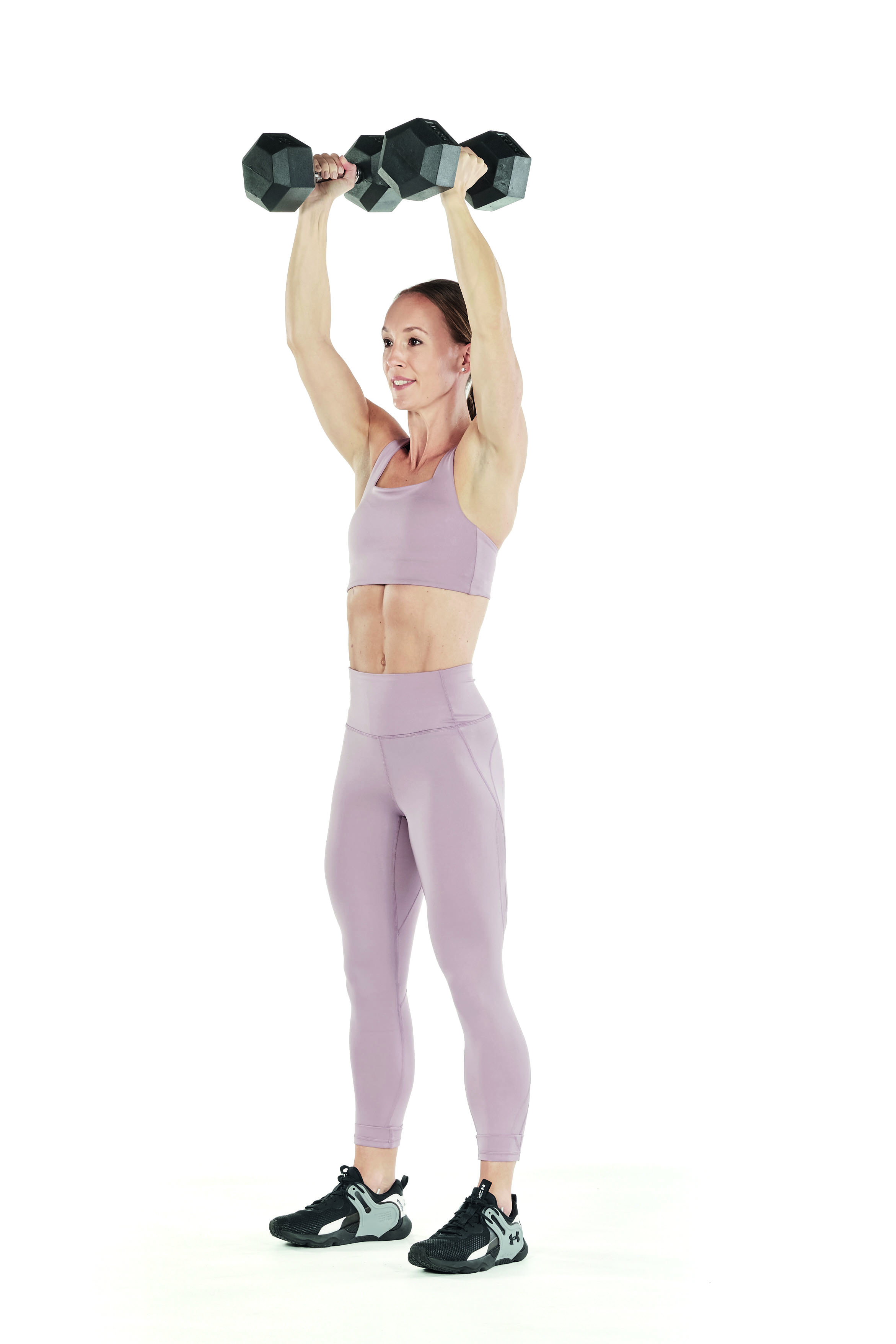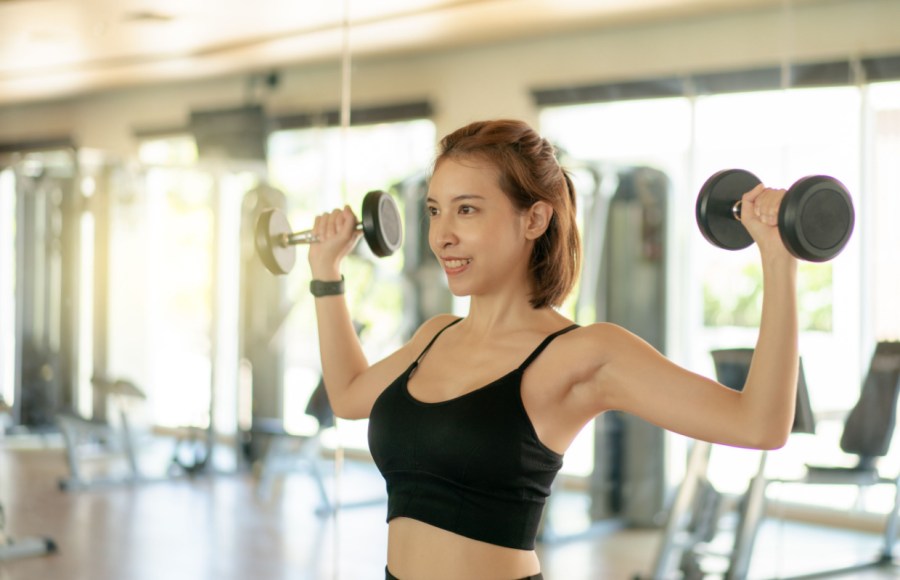Get strong arms and sleek shoulders by nailing this staple upper-body move. Here’s how to do a shoulder press with correct form…
When it comes to strength moves, few exercises will sculpt shapely shoulders like the shoulder press – especially when you know how to do it with perfectly correct form. Great for building functional strength, pressing dumbbell weights overhead while standing also tests core strength and balancing skills.
Related: How to release tight fascia and relieve pain
It primarily works the deltoid (shoulder muscles), but the shoulder press also engages the triceps muscles and those in the upper back, so you really do get a great upper-body burn.
If you’re new to the move, try performing a seated press first, as the back of the bench will support your body and help keep it stable as you press the weights overhead.
And a word of warning, start light and increase the weight load gradually. ‘You must keep your ego in check with the shoulder press exercise,’ warns personal trainer Josh Ivory. ‘It can be risky to go too heavy too soon, so perfect your technique first and add additional weight wisely.’

How to do a shoulder press
- Standing tall, engage your abs and squeeze your thighs and glutes to keep the rest of your body stable.
- Position your dumbbells to each side of your shoulders, elbow and wrists.
- Press the dumbbells from your shoulders until your arms are straight. Squeeze your thighs and glutes to keep the rest of your body stable.
- Slowly lower the weights back to the starting point.
Top tips for perfect form
- Press the weights overhead until arms are straight, but elbows aren’t locked . Your arms shouldn’t be behind your head – you should see them in your peripheral vision.
- Don’t lower the weights all the way down to your shoulders – stop when the dumbbells are in line with your ears, then press back up.
- Your hips should be in line with your shoulders. If you are leaning or arching your back (even if seated!), the weights are too heavy.
- Squeeze your glutes and tuck your pelvis under. This will help with your stability, especially as you move onto heavier weights.
- Ensure feet are shoulder-width apart to create a stable base from which to perform this exercise.
Words: Sarah Sellens, Josh Ivory | Model: Nicki Petitt-Ward | Photography: Eddie Macdonald








